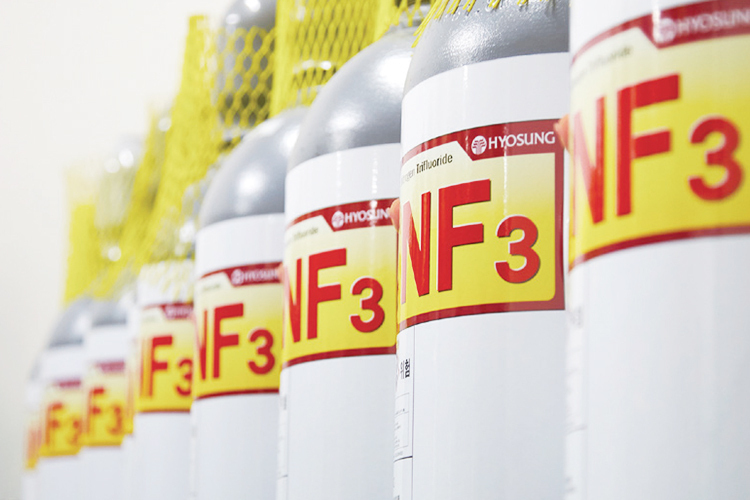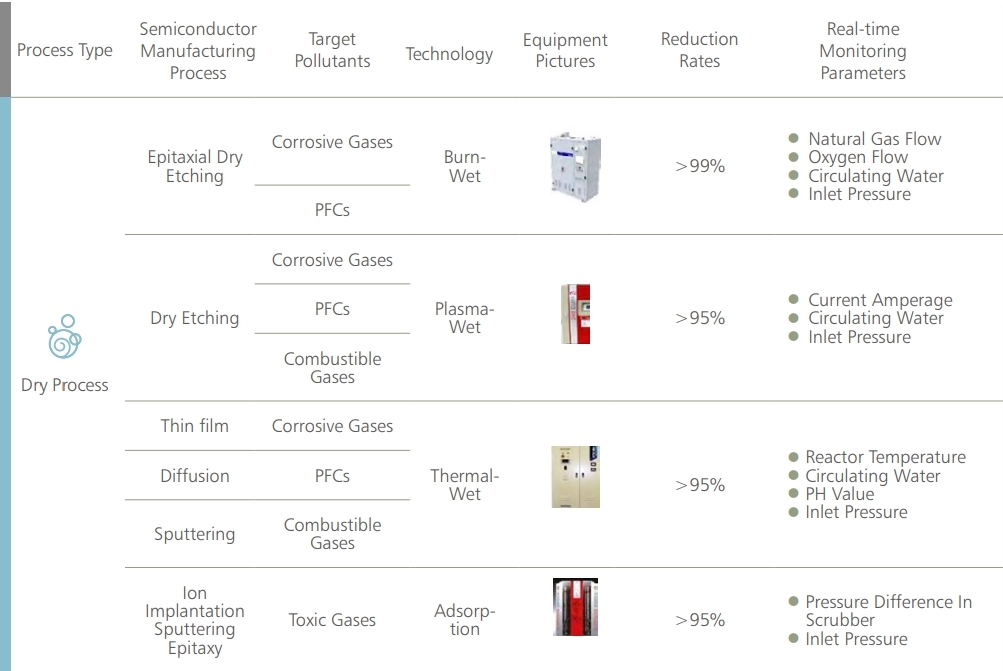 |
NF3, a potent greenhouse gas used to manufacture chips (Hyosung) |
The world is full of irony. Electric vehicles, which are supposed to be eco-friendly modes of transportation, are mounted with chips and batteries that generate polluting gases in the manufacturing process.
To make semiconductors, harmful gases are required, such as CF4, C2F6, SF6 and NF3. These ozone-destroying greenhouse gases take up to 50,000 years to decompose in the atmosphere, and are far more potent than carbon dioxide, which takes 50-200 years to break down.
As calls for environmental, social and governance commitments grow, major chipmakers are undertaking all-out efforts to “detox” these gases.
According to industry sources Tuesday, dominant foundry Taiwan Semiconductor Manufacturing Co. eliminates 95-99 percent of the harmful gases that remain after chips are made with a “scrubber.”
Unlike Samsung Electronics and SK hynix, which do not disclose official data on how they remove those toxic gases, TSMC, as a market leader, offers full transparency.
On TSMC’s website, anyone can download a document that shows how the Taiwanese company removes leftover gases. The file reveals which types of scrubbers and technologies are used at each step of its chip manufacturing process.
 |
A chart shows how TSMC eliminates toxic gases used during chip manufacturing process. (TSMC) |
TSMC uses three types of scrubbers. A burn-wet scrubber incinerates gases at 1,200 degrees Celsius with natural gas and washes away the remainder with water. A thermal-wet scrubber utilizes heat from electricity, while a plasma-wet scrubber turns gases into a plasma state and breaks them down.
“As burn-wet scrubbers use natural gas, which is a fossil fuel, the industry is paying more attention to plasma-wet or heat-catalyst technologies,” said Han Dong-hee, an analyst at SK Securities.
As chip demand soars, Samsung Electronics and SK hynix are emitting more greenhouse gases than ever. Samsung Electronics last year discharged 13.6 million metric tons of greenhouse gases, a 22 percent hike from 11.1 million tons on-year. SK hynix released 4.7 million tons, a 24 percent surge from 3.8 million tons in the same period.
The Korea Herald reached out to both firms and inquired as to which types of scrubbers and technologies are being used to remove the greenhouse gases, but was unable to get an answer.
Meanwhile, major electric vehicle battery manufacturers are making full-fledged efforts to make sure their products can meet harsh environmental regulations in Europe.
For instance, Samsung SDI and SK On, which each run electric vehicle battery factories in Hungary, are planning to collect and recycle toxic liquid waste generated during the manufacturing process.
Inside the batteries, components are glued together. The sticky liquid N-Methyl-2-Pyrrolidone is used as the glue.
“Per 1 gigawatt-hour of EV batteries produced, 1,000 tons of waste NMP is generated. As NMP is highly toxic and expensive, it has to be recovered and recycled. NMP costs $1,800 to $2,000 per ton,” said Ju Min-woo, an analyst at Meritz Securities.
In Europe, there are only two waste NMP recycling facilities, both of which are located in Hungary and owned by Korean companies -- Jaewon Industrial and Dongwha Electrolyte. Samsung SDI and SK On are expected to commission Jaewon and Dongwha, respectively, to refine their NMP waste, according to Ju.
By Kim Byung-wook (
kbw@heraldcorp.com)









![[Today’s K-pop] Blackpink’s Jennie, Lisa invited to Coachella as solo acts](http://res.heraldm.com/phpwas/restmb_idxmake.php?idx=644&simg=/content/image/2024/11/21/20241121050099_0.jpg)